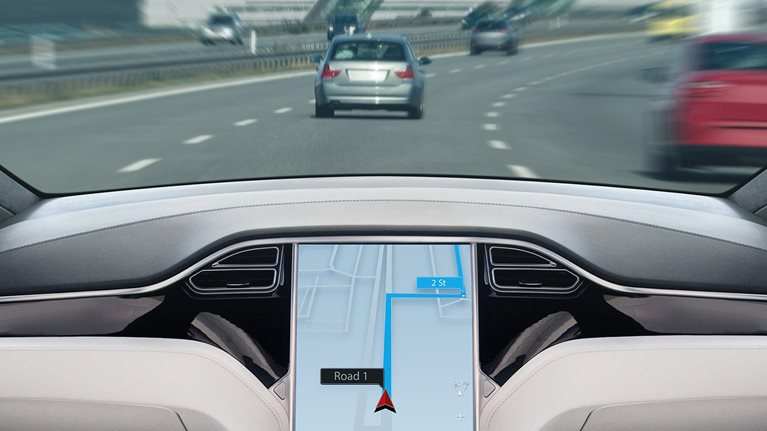2023 was a tipping point for the autonomous-vehicle industry. Although leading players were able to successfully run and scale first commercial operations and increase their funding, others saw significant setbacks, stopped or reduced their operations, or exited the market entirely. This in mind, there is still much to be done before the autonomous-vehicle industry is fully mature—but how much?
This past summer, the McKinsey Center for Future Mobility conducted a follow-up to its 2021 survey of industry decision makers (see sidebar “Survey methodology”).1 Our 2023 survey revealed that much has changed in this dynamic sector in the past two years: regional expectations are shifting, timelines for autonomous-vehicle development are extending, and needed investments are increasing. Other results reveal new opportunities for autonomous-vehicle manufacturers, such as more diversified markets and technologies with margins of 17 percent or more.
In this article, we offer updated insights from industry leaders in key categories: regional and market diversification, predicted timelines, expected bottlenecks, the size of needed investments, profitability of autonomous-vehicle components, and monetization models. These results shine a light on how the autonomous-vehicle industry could take shape in the years and decades to come.
Players expect regional and market diversification
Most survey respondents predict that three or less companies will capture a dominant share of the market. The North American market is expected to be the most fragmented, with only 15 percent of respondents expecting that the market will be dominated by one or two players. By contrast, 38 percent of respondents predict that the European market will be dominated by two or fewer players. Predictions for the race to full autonomy are also shifting: while 58 percent of 2021 survey participants believed that North America would be the first to deploy Level 4 (L4) highway pilots, 2023 respondents were evenly split between believing China or North America would be first. This is evidence of China’s progress in the autonomous-vehicle race, driven by factors such as robust government backing; heightened investments in research and data availability; and a receptive consumer attitude toward adopting new technology.

The timeline for autonomous-vehicle development is extending
The adoption timeline for autonomous vehicles has slipped by two to three years on average across all autonomy levels relative to the 2021 survey (see sidebar “Stages of autonomous-vehicle development”). According to this year’s survey, L4 robo-taxis are now expected to become commercially available at a large scale by 2030, and fully autonomous trucking is expected to reach viability between 2028 and 2031. This may be due to ongoing technical obstacles and challenges with capital availability. In addition, regulatory challenges persist as autonomous-vehicle regulations are still being developed and enacted. Despite these projections, well-funded pioneers are pushing ahead and moving to expand deployment across geographies.

Regulation, technology, and consumer safety are key bottlenecks and considerations for development
About 60 percent of respondents still believe regulation is the biggest bottleneck to autonomous-vehicle adoption, the same relative importance as in the 2021 survey. However, respondents this year reported an increased focus on technology, rising from an average of 26 percent in 2021 to an average of 32 percent in 2023. Though experts do not believe consumer demand will be the main impediment to adoption, autonomous-vehicle players still have important considerations to take into account to ensure consumer uptake. Two-thirds of respondents see improved safety as a key consideration for consumers. Productivity (the ability to multitask while driving) and comfort are anticipated to be secondary considerations in customers’ willingness to pay.

Increased investments in software are needed to achieve full autonomy
To reach L4 and higher levels of autonomy, respondents estimate that significant investment cumulative until first commercial launch is needed. Estimates increased by 30 percent to 100 percent compared to 2021, depending on the autonomous-driving use case. More than $4 billion for full-journey autonomous trucks is expected to be needed, and investments for Level 3 highway use cases (more than $2 billion) and L4/5 robo-taxis (more than $5 billion) are expected to double from what the previous survey estimated. Software development is expected to be the major driver of this needed investment: alongside validation costs, software development will be crucial for pushing the technology forward and demonstrating its safety. Among needed software, respondents ranked prediction algorithms and perception software as the most critical.

Software is expected to have high margins
Software will require significant investment, but it is also expected to be the most profitable of the technology stack elements for autonomous vehicles, with average margins of more than 15 percent. The margins for services for autonomous vehicles are similarly high at an average margin of 14 percent, and hardware is expected to have margins of 10 percent on average. However, all of these components will need to be developed to achieve all autonomous driving use cases.

Players are expected to experiment with new monetization models
As more advanced forms of autonomous vehicles roll out, more than 70 percent of respondents believe new go-to-market models will likely become prevalent in the market. While established autonomous-vehicle players mainly believe in pay-per-use models, start-ups and other entities believe in subscription models. This year’s survey revealed more sizable regional differences relative to the 2021 survey. North American players were most bearish on pay-per-mile models, whereas European players were focused on pay-per-trip models. Across regions and company types, models combining per-mile and per-trip systems were popular, signaling that monetization models will likely see experimentation overall.

Paths toward the future of autonomous vehicles
Today, leading industry players are shifting toward scaling and trying to optimize their business models so they can eventually reach profitability. In this evolving mobility landscape, strategic partnerships will be key. Almost all respondents (96 percent) saw strategic partnerships as crucial to autonomous-vehicle development, and more than half (56 percent) thought the relationship between OEMs and end users (such as logistics carriers) is already changing.
These partnerships will help players tackle multiple issues and prepare for future growth. Industry collaboration will be critical to derisk investments and create the infrastructure needed to build, operate, and maintain autonomous vehicles at scale. Collaboration within the industry can also help companies continue to innovate new offerings.
In addition to intra-industry partnerships, players in the industry can educate consumers about autonomous vehicles, including about their benefits and liabilities. Autonomous-vehicle players will have to navigate new regulations at the local, state, and national levels to ensure deployments are rolled out on time with full compliance.
Above all, industry players can build trust across stakeholders by delivering on the promise of autonomy: improved safety, productivity, accessibility, and equity for all.


